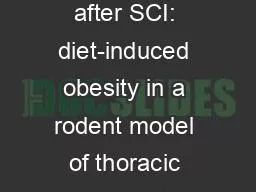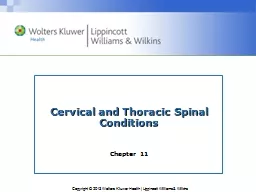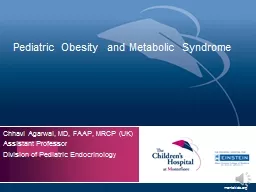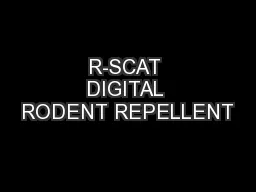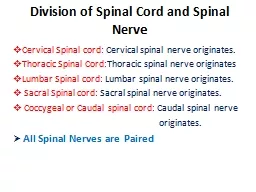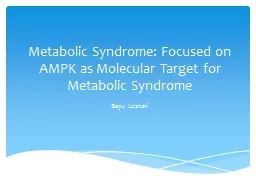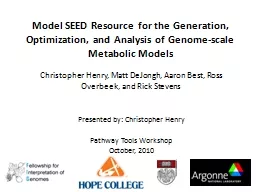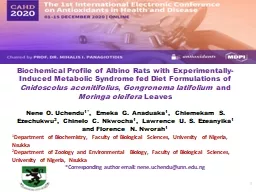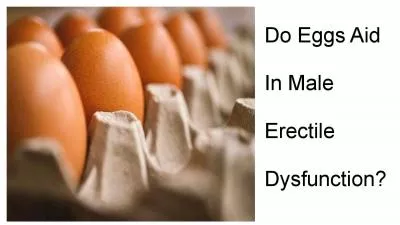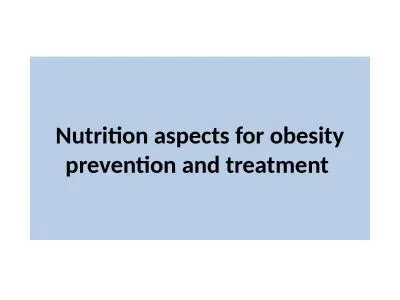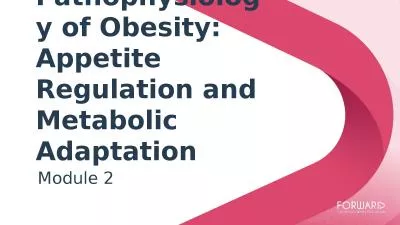PPT-Metabolic dysfunction after SCI: diet-induced obesity in a rodent model of thoracic spinal
Author : bikershobbit | Published Date : 2020-06-16
Department of Neurobiology amp Anatomical Sciences University of Mississippi Medical Center Jackson MS USA Kwamie Harris Brittany Duncan Alexandra Himel Raymond
Presentation Embed Code
Download Presentation
Download Presentation The PPT/PDF document "Metabolic dysfunction after SCI: diet-in..." is the property of its rightful owner. Permission is granted to download and print the materials on this website for personal, non-commercial use only, and to display it on your personal computer provided you do not modify the materials and that you retain all copyright notices contained in the materials. By downloading content from our website, you accept the terms of this agreement.
Metabolic dysfunction after SCI: diet-induced obesity in a rodent model of thoracic spinal: Transcript
Download Rules Of Document
"Metabolic dysfunction after SCI: diet-induced obesity in a rodent model of thoracic spinal"The content belongs to its owner. You may download and print it for personal use, without modification, and keep all copyright notices. By downloading, you agree to these terms.
Related Documents

